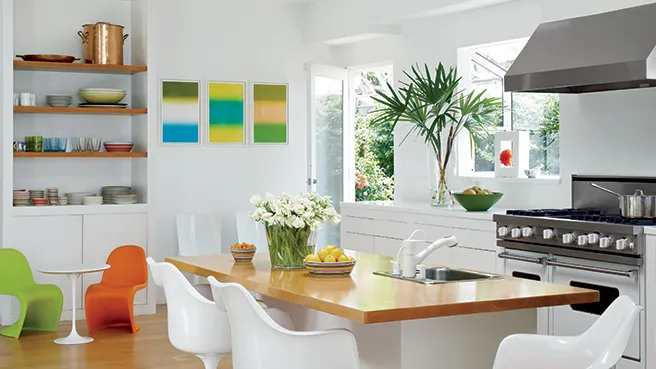Designing a kitchen that’s safe for kids not only helps in preventing accidents but also encourages them to learn and participate in daily kitchen activities. It’s all about creating a space that is both functional and fun, fostering an environment where kids can explore their culinary creativity without compromising on safety. If you’re looking for professional design guidance to achieve this, Gravita Designs, Manhattan, NY, specializes in creating child-friendly kitchen spaces that balance safety with style. Here’s how you can transform your kitchen into a child-friendly haven.
Safety First: The Cornerstone of Kid-Friendly Kitchens
Before diving into aesthetics and functionality, ensuring the safety of the little ones is paramount. A child-friendly kitchen design focuses on minimizing risks without stifling curiosity.
Secure Cabinets and Appliances
Start with securing cabinets and appliances. Use safety locks on cabinets containing hazardous materials, and install appliance locks to prevent small hands from turning on the oven or dishwasher. It’s a simple step that can prevent many accidents.
Safe Kitchen Layout
Design the kitchen layout to keep dangerous zones out of reach for children. This includes placing the stove and knives far from the edge of countertops and ideally in a spot that’s not directly accessible to young children. An island can serve as a barrier, keeping kids at a safe distance while allowing them to participate under supervision.
Functional Features for the Little Chefs
With safety measures in place, you can focus on integrating features that make the kitchen more accessible and enjoyable for children. Encouraging participation in kitchen activities aids in their development and fosters a love for cooking.
Adjustable Countertops and Seating
Incorporate areas with adjustable countertops or a pull-out cutting board at a lower height, so children can help with preparation tasks comfortably. Alternatively, provide a sturdy step stool or a built-in pull-out step to give them the lift they need to reach standard countertops safely.
Kid-Friendly Utensils and Storage
Invest in child-sized utensils that are easier for little hands to grasp and control, made from materials that won’t easily break or cause injuries. Store these utensils in an accessible drawer or shelf, so kids know where to find their tools for helping out in the kitchen.
Engaging the Senses: A Kitchen that Inspires Learning
A kitchen can be a fantastic classroom. Designing it with educational opportunities in mind can turn every cooking session into a fun learning experience.
Educational Decor
Consider incorporating educational elements into the décor, such as colorful charts showing different fruits and vegetables or measurement conversion tables. These can decorate the walls while also serving as handy references for cooking lessons.
A Space for Creativity
Allocate a special spot in the kitchen where kids can be creative, such as a chalkboard wall for drawing or a small table for culinary experiments. It’s important for kids to feel like they have a space that’s truly theirs in the kitchen.
Maintenance and Cleanliness: The Unsung Heroes
In a kid-friendly kitchen, easy maintenance and cleanliness are vital. Opting for durable materials and smart design can significantly reduce clean-up time and keep the space hygienic. Similarly, good HVACR installation plays a critical role in maintaining air quality and comfort, which are essential for a healthy kitchen environment. Trusted professionals such as Gustave A. Larson ensure that your kitchen benefits from the best HVACR system, which helps in controlling odors, humidity, and temperature—further supporting a clean and pleasant cooking area.
Durable Materials
Choose durable, easy-to-clean materials for countertops, floors, and backsplashes. Quartz countertops, for example, are not only sturdy but also non-porous, making them resistant to stains and bacteria. Similarly, laminate or tile flooring can withstand spills and stains, making cleanup a breeze.
Accessible Cleaning Supplies
Keep a small broom, dustpan, and other cleaning supplies in an accessible place for kids to encourage them to clean up after their kitchen adventures. Teaching responsibility and cleanliness from a young age is invaluable.
Remember, the goal is to create a space that encourages kids to explore, learn, and participate in kitchen activities safely. Fun fact: Children who are involved in meal preparation are more likely to try new foods and develop healthy eating habits. By integrating these design elements, your kitchen will not only be a safe space for kids but also a place where they can grow, learn, and create wonderful memories.

